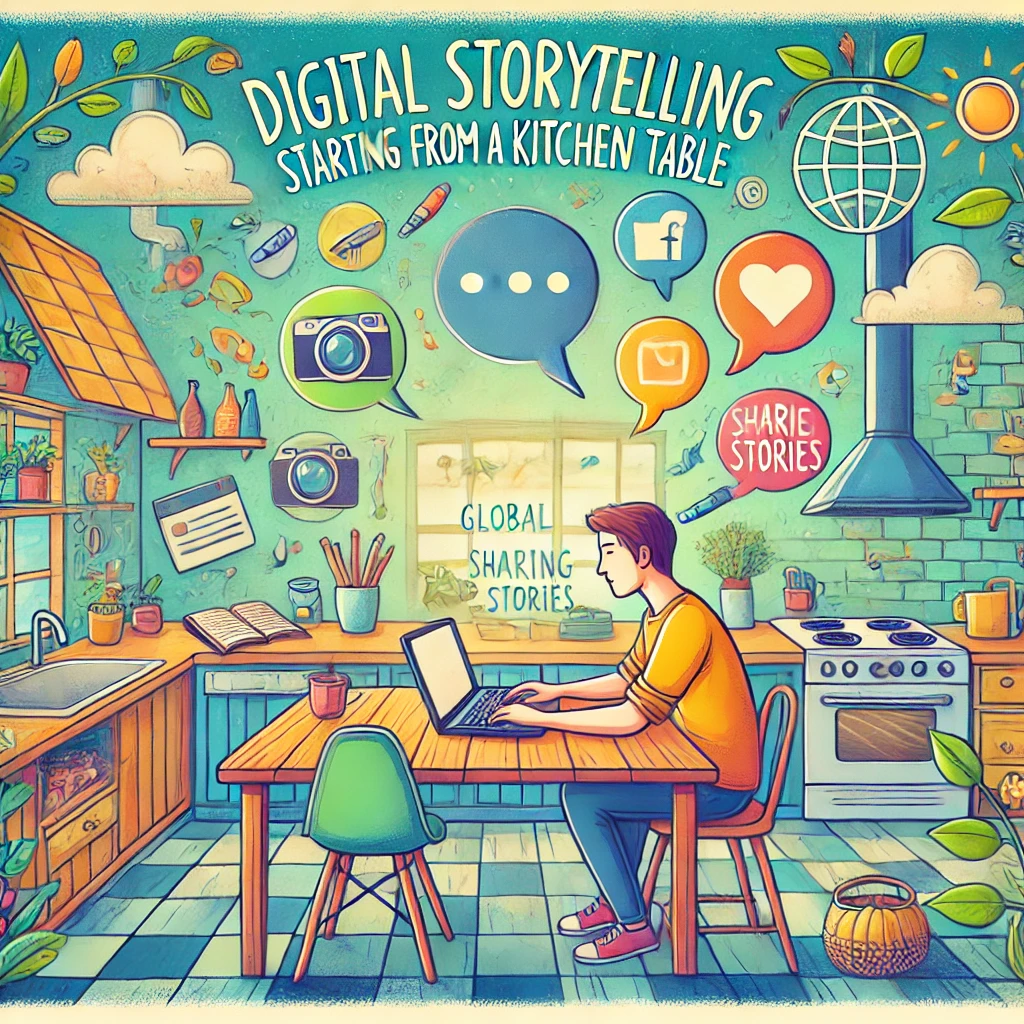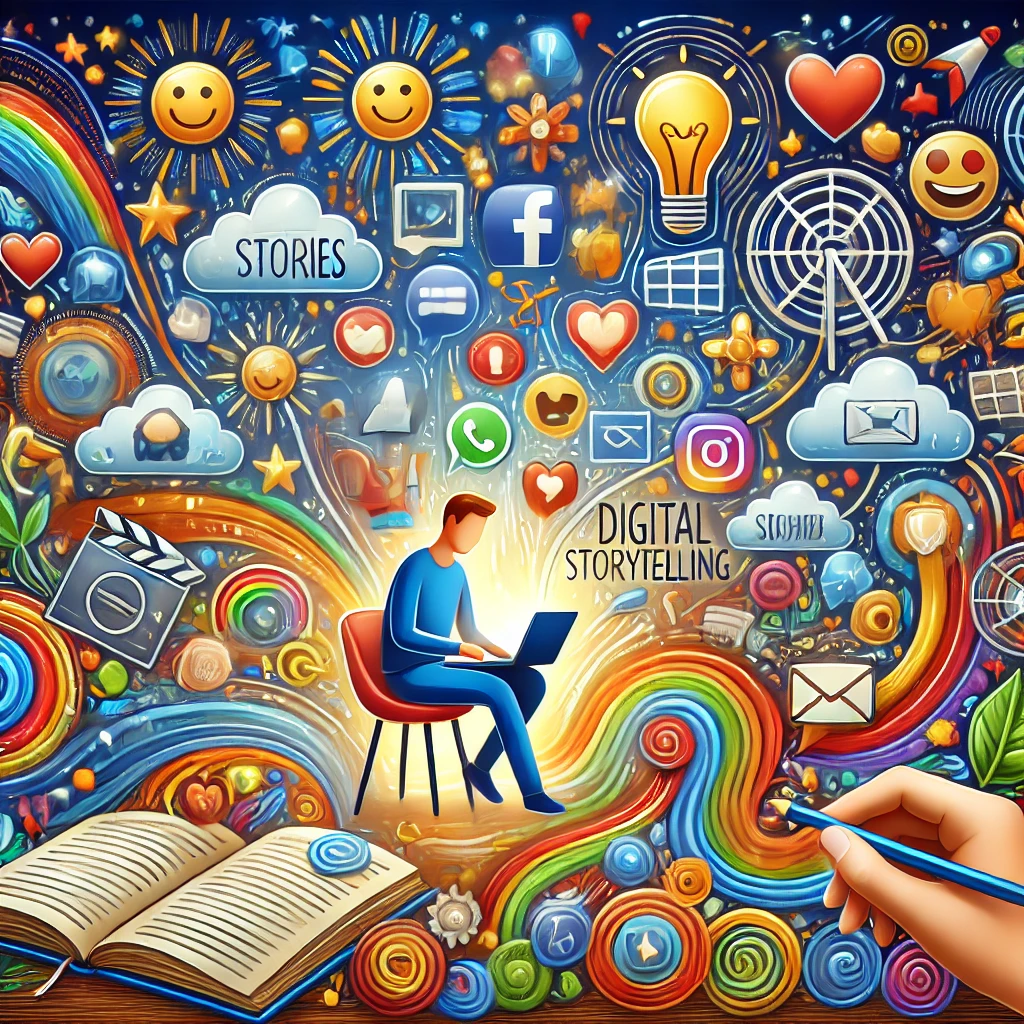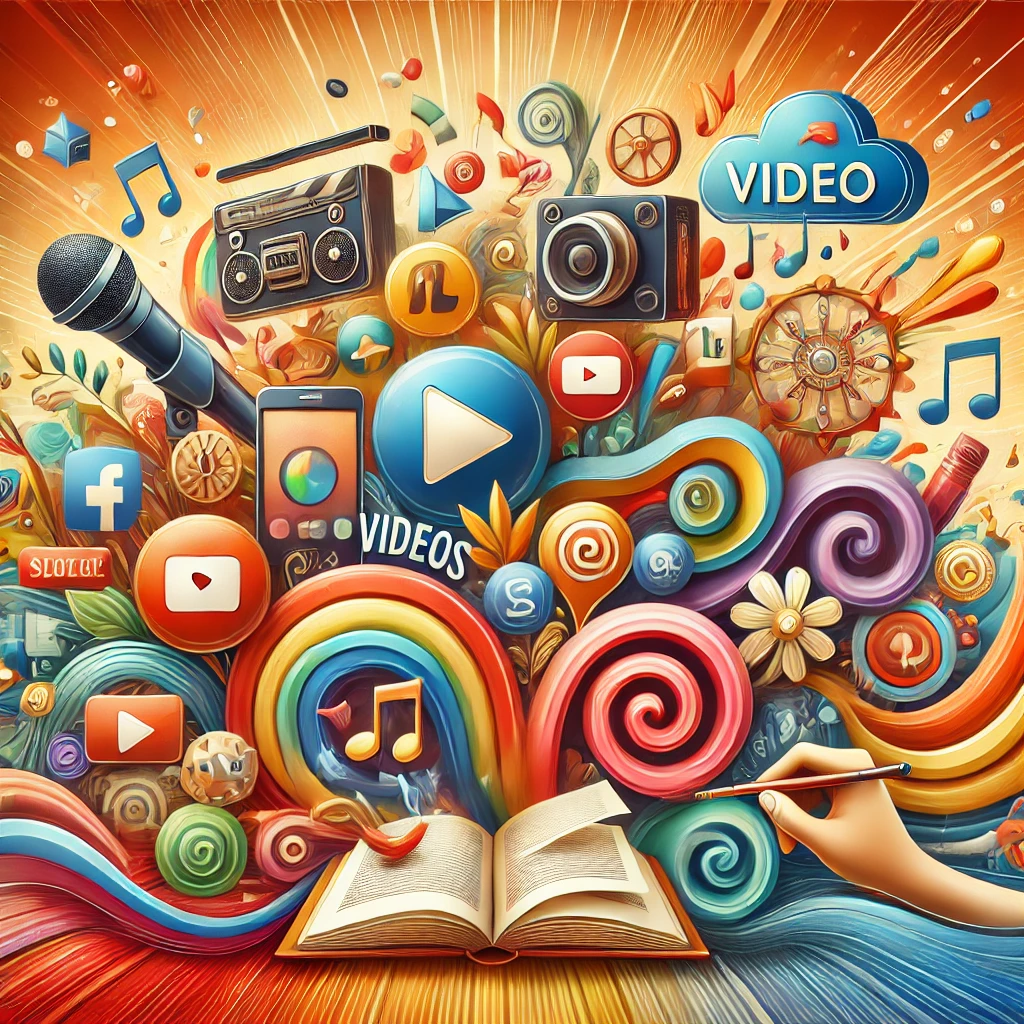Digital storytelling isn’t just a buzzword; it’s the secret ingredient behind some of the most successful online brands.
It’s how businesses of all sizes—yes, even those that started at a kitchen table—have reached audiences around the world.
But what exactly is digital storytelling, and why does it matter for your online journey?

What is Digital Storytelling?
In simple terms, digital storytelling is the art of using online content to share your brand’s story.
This isn’t about spinning tales; it’s about connecting with people on a human level.
It’s about showing who you are, what you believe in, and why your audience should care.
The beauty of digital storytelling is that anyone can do it. You don’t need fancy equipment or a big marketing budget. All you need is a message that resonates and the willingness to share it.
Real-Life Success Stories in Digital Storytelling
Let’s look at some real-life examples of brands that started small but used digital storytelling to reach a global audience:
- Innocent Drinks – From a small smoothie stall to an international brand, Innocent Drinks built their success by sharing fun, relatable stories. They used playful, conversational language on their packaging and social media, making their brand feel approachable and authentic.
- Gymshark – This fitness brand began in a garage in the UK, but it grew rapidly by connecting with its audience through relatable fitness journeys and community-driven content. By sharing stories of real customers and influencers, Gymshark made their brand a lifestyle, not just a product.
- GoPro – Starting as a simple camera company, GoPro skyrocketed by encouraging customers to share their adventures. User-generated content became their primary storytelling tool, building a community of adventurers and creators who connected over shared experiences.
These brands didn’t just sell products—they sold experiences and built communities. Their success shows the power of storytelling in building trust and loyalty.
Why Digital Storytelling Matters

People don’t just buy products—they buy stories. Whether it’s a heartfelt journey of overcoming challenges or a quirky tale about a product’s creation, stories build trust. They make your brand memorable and relatable.
Digital storytelling helps you stand out in a crowded online space. It allows you to connect with your audience emotionally, turning casual visitors into loyal supporters.
Getting Started: Building Your Brand Story
Know Your ‘Why’ –
This is more than just making money; it’s about the deeper reason behind your brand’s existence.
Are you solving a problem you faced yourself? Are you passionate about helping others learn a skill? Sharing this purpose makes your brand relatable and helps people connect with your journey.
For example, Gymshark started because its founder, Ben Francis, couldn’t find fitness apparel that suited his needs. By sharing this story, Gymshark attracted a community that shared his passion.
Be Authentic –
Authenticity is the cornerstone of effective digital storytelling.
People see through overly polished content. Share your struggles, the lessons you learned, and even the mistakes you made along the way.
Innocent Drinks became popular not just for their smoothies but because they shared fun, honest stories about their beginnings, including the fact that they weren’t sure their product would succeed.
Speak Your Audience’s Language –
To truly connect, your content needs to feel like a conversation. Avoid jargon and complicated language.
Think about how your audience speaks and reflect that in your storytelling. Use everyday words and a friendly tone.
GoPro excelled at this by speaking the language of adventurers and creators, making their brand feel like a community rather than just a product seller.
Know Your ‘Why’ –
Why did you start your online journey?
What’s the purpose behind your brand?
Your ‘why’ is the heart of your story.
Be Authentic –
People connect with real experiences, not polished perfection.
Share your highs and lows honestly.
Speak Your Audience’s Language –
Talk to your audience, not at them.
Use language that feels conversational and relatable.
Digital Storytelling Tools and Platforms
Digital storytelling is more than just writing blog posts. It involves using different types of content, such as:
- Videos – Perfect for sharing behind-the-scenes glimpses or how-to guides.
- Social Media – Great for engaging with your audience in real-time.
- Blogs and Articles – Ideal for detailed narratives and in-depth storytelling.
- Podcasts – A brilliant way to share longer stories in a more personal, conversational format.

And Finally…
Digital storytelling isn’t reserved for big brands or seasoned marketers. It’s for anyone with a message to share. I
f you’re starting from scratch, don’t worry—everyone starts somewhere. Begin by understanding your ‘why’, speak honestly, and choose the right platforms to tell your story.
Your unique voice is your greatest asset, so don’t be afraid to use it.
Here’s a little transparency: My website contains affiliate links. This means if you click and make a purchase, I may receive a small commission. Don’t worry, there’s no extra cost to you. It’s a simple way you can support my mission to bring you quality content.

